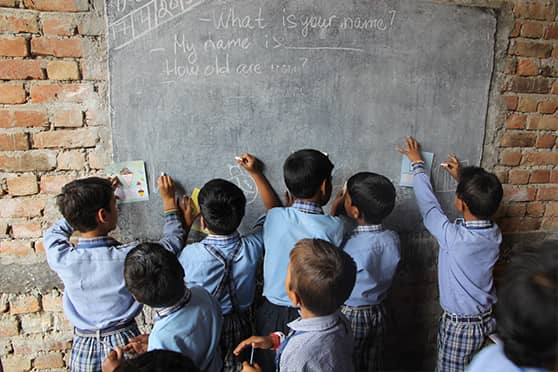UNESCO report on gender boys’ disengagement from education


Girls are more likely than boys to never attend school, but boys in many countries are more likely to drop out or repeat primary grades, a Global Education report by the United Nations Educational, Scientific and Cultural Organisation (UNESCO) has concluded.
The report titled ‘Leave no child behind: Global report on boys’ disengagement from education’ pointed out that no less than 132 million boys of primary and secondary school age are out of school.
Boys are more likely than girls to repeat primary grades in 130 out of 142 countries, with data indicating their poorer progression through school. Boys are also more likely than girls to experience physical bullying and are often targeted because of their real or perceived sexual orientation and gender identity or expression (SOGIE), the report said.
“In 57 countries with data on learning poverty, 10-year-old boys fare worse than girls in mastering reading skills and adolescent boys continue to fall behind girls at the secondary level…. As it stands, 132 million boys are currently out of school,” the report stated.
The UN report attributed boys’ disengagement from education to harsh discipline, corporal punishment, gendered norms, poverty and the need to work.
“Poverty and the need to work, for instance, can lead boys to drop out. Gendered norms and expectations can also affect their desire to learn. In particular, certain subjects can run counter to traditional expressions of masculinity, making them unpopular with boys. Harsh discipline, corporal punishment and other forms of violence at school also negatively impact boys’ academic achievement, while increasing absenteeism and dropouts,” the report said.
The report noted that secondary education is where boys’ disadvantage is most prevalent.
“The right to education remains unfulfilled for many boys. Far too many children and youth of primary and secondary school age are out of school. Just over half of them are boys. It has been a concern that COVID-19 pandemic would lead to an increase in school dropouts. In 2020, the last school year before the pandemic, an estimated 259 million children and youth of primary and secondary school age were out of school, 132 million of whom were boys. There will not be a clear picture of COVID-19 effects on enrolments before the end of 2022,” the report said.
At the global level, almost no country with data has achieved gender parity at the tertiary level.
The gender parity index data in 2019 for tertiary enrolment showed 88 men for every 100 women enrolled at tertiary level. “In 73 countries, less boys than girls are enrolled in upper-secondary education. In Mathematics, on the other hand, the gender gap that once worked against girls at the start of the millennium has narrowed or equalised with boys in half of all countries with data,” the report said.
“Despite boys’ clear disengagement from and disadvantage in education in certain contexts, there are few programmes and initiatives addressing this phenomenon holistically, with system-level, gender-specific policies even more rare. Scarce policy attention has been given to gender disparities in education that disadvantage boys. Existing policies are predominantly in high-income countries. Few low- or middle-income countries have specific policies to improve boys' enrolment,” it said.
The report recommended providing equal access to education and preventing boys' drop out, reforming traditional practices such as initiation ceremonies that pull boys and young men out of school or adapting their timing, building on lessons identifying and addressing barriers to girls' education, making learning gender-transformative, safe and inclusive for all learners and creating gender-transformative and inclusive learning environments that address all learners' needs.